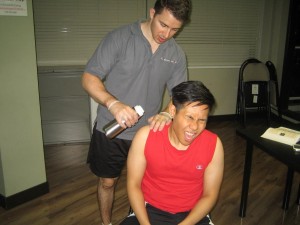Chemical burns typically occur once the eyes or skin comes in contact with irritants such as bases or acids. The chemicals that come in contact with the skin can cause a reaction on the skin or inside the body. This type of burn can affect the internal organs if they are ingested. In case chemicals are swallowed, immediately inspect the mouth for burns or cuts. Go to the nearest emergency facility or call the local poison control for help. Avoid giving anything by mouth unless instructed by a poison control professional. If the individual is unconscious, it is best to call for emergency assistance right away.

Causes of chemical burns
Majority of chemical burns are caused by contact with bases and acids. Strong acids can cause severe burns. The burns caused by either acids or bases are also called as caustic burns. Always remember that chemical burns can occur at work, school, home or any location where there are chemical materials present. Some of the common products that can cause chemical burns include:
- Cleaning products
- Car battery acid
- Bleach
- Denture cleaners
- Ammonia
- Pool chlorinating products
- Teeth whitening products
Steps to follow for chemical burns on the skin
- Eliminate the cause of the burn by initially brushing off any leftover dry chemicals and then rinse it off using cool running water for 10-20 minutes or more.
- Remove jewelry or clothing that has been contaminated by the chemical.
- Cover the burned area in a loose manner using a dry sterile dressing or a clean cloth.
- If the individual complains of increased burning after the first washing, wash the area again for several minutes.
- Provide over-the-counter pain reliever for pain if needed. You can provide ibuprofen, aspirin, acetaminophen or naproxen. For children or teenagers, use aspirin with care.
Always remember that all types of burns are prone to tetanus. Doctors usually recommend a tetanus shot every 10 years. In case the last shot received by the individual was more than 5 years ago, the doctor might recommend a tetanus booster shot. For minor chemical burns, they usually help without requiring further treatment.
[youtube url=”http://www.youtube.com/watch?v=ERDwTy5pwkA”]When to seek emergency assistance
- The individual manifests signs of shock such as pale complexion, fainting or shallow breathing.
- If the chemical burn has penetrated the first skin layer, resulting to a second degree burn that covers more than 3 inches of the skin.
- The chemical burn occurred on the hands, feet, eye, face, buttocks, and groin or over a major joint.
- If the individual is suffering from pain that could be not remedied with over-the-counter pain medications.
In case you are unsure whether the chemical exposed to is toxic or not, it is best to immediately call the poison control center. If you seek emergency assistance, always bring the chemical container or provide a complete description of the substance for identification. This is the reason why the classes on emergency preparedness and response in first aid courses are vital.
